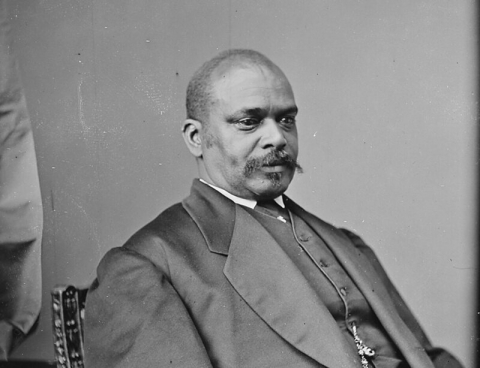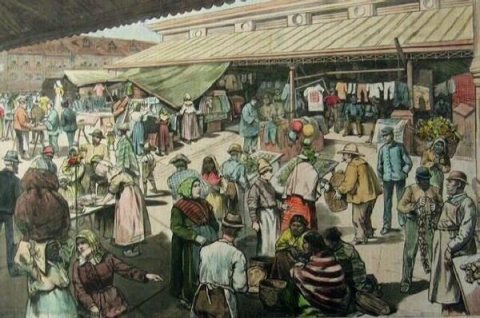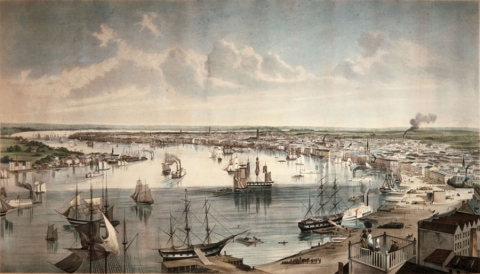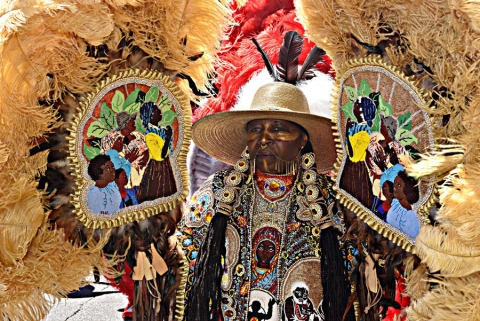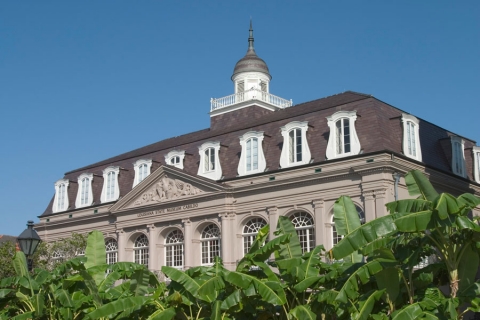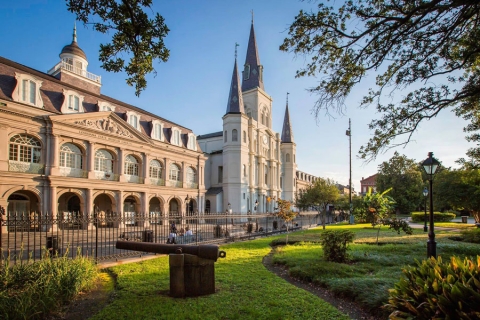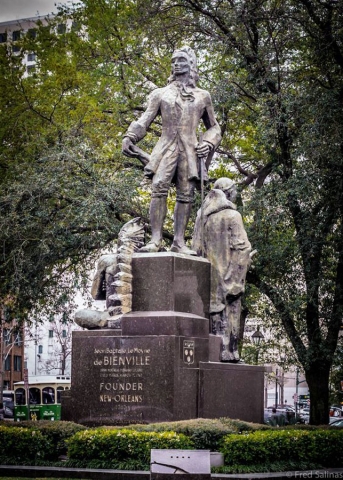The National WWII Museum tells the story of the American experience in the war that changed the world: why it was fought, how it was won, and what it means today so that all generations will understand the price of freedom and be inspired by what they learn. The museum celebrates the American spirit, teamwork, optimism, courage and sacrifices of the men and women who fought on the battlefront and served on the Home Front.
History
Oscar Dunn, America’s Forgotten First Black Lieutenant Governor
March 07, 2022
A significant political figure in Reconstructionist Louisiana, Oscar James Dunn, rose to prominence after the Civil War, becoming the first black lieutenant governor, serving Louisiana from 1868 to 1871. After his untimely death in 1871, Dunn faded into obscurity. Until recently, there were no monuments, statues, or streets named for him in New Orleans. In Jul.
Culture and Connections: The French Market's Enduring History
September 30, 2021
America’s oldest and best loved public market writes its’ own history every day. With each new sunrise on Decatur Street, history repeats itself in fresh and new ways. For over two hundred years, New Orleans residents have enjoyed “making groceries” at the old French Market in the Quarter.
Oh, What a Difference a Century Makes!
January 29, 2020
Take a look around at your surroundings in the French Quarter and try to imagine what it was like one hundred years ago. In the Roaring Twenties, the neighborhood attracted artists and writers with its low-rent, faded charm, and colorful street life. Jackson Square was the center of a vibrant yet short-lived bohemia. The Quarter was mostly a gritty working class slum where people spoke French as often as English. Women lowered baskets to the street to grocers who loaded them with food and added a pint of gin. Artists and writers had taken to the area, seduced by its cheap rent.
Take a Sentimental Journey in the French Market
July 30, 2019
America’s oldest and best loved public market writes its own history every day. With each new sunrise on Decatur Street, history repeats itself as it has for over 200 years: always the same, yet impossible to predict. This keeps it fresh and new every visit, and this summer is no exception.
Our Riverfront, Past and Present
May 01, 2019
From the French Quarter, visitors can see with their own eyes how New Orleans earned the nickname the “Crescent City” as large vessels follow the dramatic turn in the river upon which the early city was situated. The site of the original town was built in 1718 along the banks of “Old Muddy,” the Mississippi River's sweeping crescent-shaped bend. Ancient silt deposits from floods created ground higher than found in nearby swamps forming natural levees. In 1722, construction of a low levee was completed to help prevent flooding of the city.
"Killing 'em Dead with Needle and Thread" A Brief History of Mardi Gras Indians
February 05, 2019
One beautiful Fat Tuesday, my dear native New Orleanian friend, Kyle, invited me to take a walk a few blocks from Bourbon Street to the historic Tremé neighborhood, America’s oldest community of free black people, to catch a glimpse of a tradition that he described as “uniquely New Orleans but nothing like the booze and beads of the French Quarter.” Intrigued, I decided to take a stroll across Rampart Street to the Backstreet Cultural Museum at 1116 Henriette Delille Street. There, in the shadow of St.
Exploring French Quarter Museums
November 05, 2018
My old friend from college, a real history buff, visited recently. Michael and I decided to spend a couple days visiting some of our best museums. We headed to the French Quarter Museums Association Visitor Center at 533 Royal Street, offering free information about all the participating museums in the Vieux Carré. The French Quarter Museum Association is a network of unique cultural and historical museums, all within a few blocks of each other, that tell diverse stories from all corners of New Orleans’ oldest neighborhood.
New Orleans Museums & Curiosity Shops, Past and Present
July 27, 2018
Imagine walking down a cobblestone street in 19th century New Orleans and you decide to take your family to The Crescent City Museum. What a delight to see the menagerie including lions, tigers, gorillas, kangaroos, white peacocks, and a Japanese hog! Over a thousand curiosities in glass cases were available for visitors, and feats of Chinese juggling and knife throwing were regular spectacles.
Royalty, Explorers, and Clever Con Men Or A Salute to Bienville, Our Founding Father
May 07, 2018
When reflecting on our tricentennial and our history, it is important to remember that without Bienville, there would be no New Orleans. Enjoy a stroll over to the 400 block of Decatur Street to view the statue erected in 1955 to honor a French-Canadian explorer and colonizer, Jean-Baptiste Le Moyne, Sieur de Bienville. He founded New Orleans on a crescent-shaped piece of high ground in the bend of the Mississippi River, a place that he felt would be safe from hurricanes and tidal surges.
Gallatin Street: From Infamous Neighborhood to Jazz-inspired Record Label
May 07, 2018
w/ Joseph Makkos & Baylee Badawy
Adjacent to the New Orleans Jazz Museum at the Old U.S. Mint, runs French Market Place. But the street where now stands a shelter that extends the length of the French Market was not always as colorful and bustling with tourists and busied with the likes of artists selling their vibrant handmade arts and crafts, as it is now, on any given date of the week.
Adjacent to the New Orleans Jazz Museum at the Old U.S. Mint, runs French Market Place. But the street where now stands a shelter that extends the length of the French Market was not always as colorful and bustling with tourists and busied with the likes of artists selling their vibrant handmade arts and crafts, as it is now, on any given date of the week.


